https://www.youtube.com/watch?v=KltThHyg8Q4
Legato Tips and Tricks for Better Guitar Playing - Steve Stine Live Stream

Hey , everybody just gonna take a minute here and make sure you can hear me .
OK ?
And you can see me .
I'll just check the chat here and make sure that uh you all can hear me and see me .
OK ?
So , hey , everybody , thank you so much for joining me today .
Hi there today .
What we're gonna be doing is we're gonna be talking about Legato .
OK ?
Legato playing .
Hey , everybody so glad you could be with me today .
Um What we're gonna do , I don't wanna waste your time .
I know some of you are on lunch break and different things like that .

So I'm gonna get right into this .
We're gonna talk a little bit about what Legato is .
Um , some myths and some facts about Legato playing and then I'm gonna give you some different things that you can work on .
So , um , so you've got some stuff you can practice when you go home or when you get your guitar .
OK .
So let's go ahead and get started here .
My name is Steve Stein .
Um I work for a company called Guitar Zoom .
Uh and I teach guitar lessons all around the world .
I teach different people , uh all kinds of stuff about playing guitar .
So , if I can help you in any way , please let me know .
Um Please subscribe to my channel if you can spread the word and let's see if we can't uh make people's lives a little bit better with guitar playing .
So let's talk a little bit about , about um legato playing .
Now , what is Legato ?
I tend to think , uh when I teach this stuff , I tend to think that Legato is more like hammer ons and pull offs and things like that where you're not picking everything , right ?
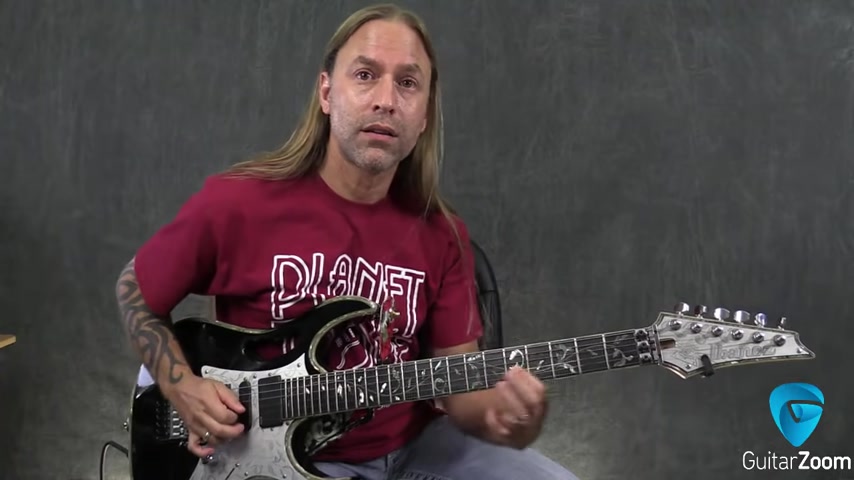
So , if you're playing some sort of passage on your guitar instead of always going and picking everything , what you would do is you would incorporate some elements of hammer on in your play .
Ok .
So today , what we're gonna focus on are hammer ons pull offs and what's called trills .
Now , we do have slides , but that's another conversation to have .
So today we're just gonna focus on those three things .
So , uh , again , when this , uh , when this live stream is done , I'll post it on youtube and wherever else and then you can watch it over and over and over if you need to because I don't have any tablets here for the things I'll be talking about .
Uh , but you'll certainly be able to watch it afterwards and , and take notes and things like that .
So if you have your guitar handy , make sure that it's tuned up and let's go ahead and get started .
So um and then I'll watch over here every once in a while .
Hey , everybody .
Um let's see here .
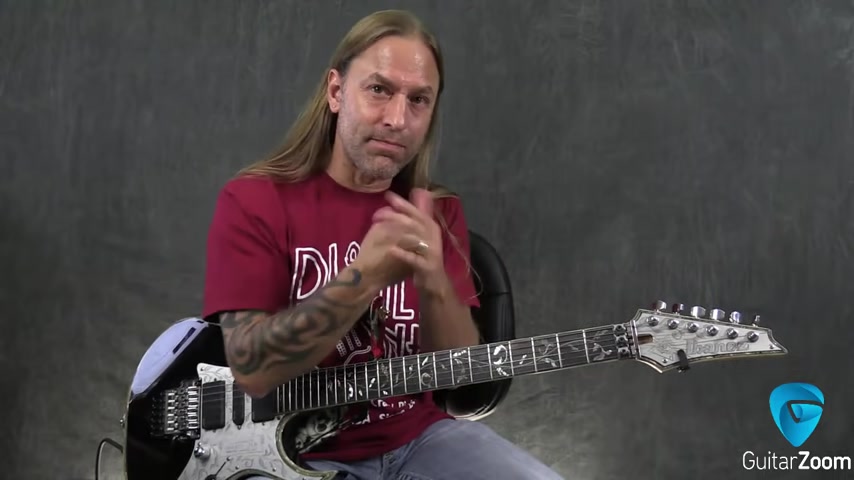
It looks like everybody can see me and hear me .
OK .
Check 12 .
OK .
Let me know uh that you can hear me .
OK ?
It looks like everything is good .
OK ?
Cool .
Awesome .
All right , perfect .
So here we go legato .
Let's just start off by understanding what it is .
Then let's apply it in some real world situations and then you can go from there .
OK .
So what is Legato ?
Well , we've got what we call hammer ons unless I , I'm sure you've heard of these things , but let's just make sure we're doing them right ?
OK .
So what a hammer on is , let's go to the fifth of the fourth string .
And what we're gonna do is we're gonna take our third finger and we're gonna hammer , we're gonna smack down on the seventh fret of the fourth string and the goal is not just to set the finger down .
It's actually to , to smack that finger down to keep the vibration going .
Right .
That's what a hammer on is a pull off is just the opposite .

Let's say we started with the seven and we wanted to go to the five .
So a pull off would be playing that seven and then what we're gonna do is we're gonna flick the string with that seventh fret .
Uh with that third finger , excuse me , to the fifth fr So , what I'm doing is I'm doing this towards the floor .
I'm flicking that string towards the floor .
Ok .
Now some people will say , well , can you do it towards the ceiling ?
Yes , whatever works for you .
I don't , I don't tend to do my pull offs , you know , pushing up or towards the ceiling .
But if that works for you , that's great .
So , I've got a hammer on , I've got to pull off .
And the trick with the pull off is you can really hear that .
I'm flicking that string .
I'm not just picking the finger up , I'm not just lifting it up .
I'm literally kind of flicking the , the string with my finger like that .
So hammer on pull .
Now , if I put the two together and do it over and over and over , we call that a trill .
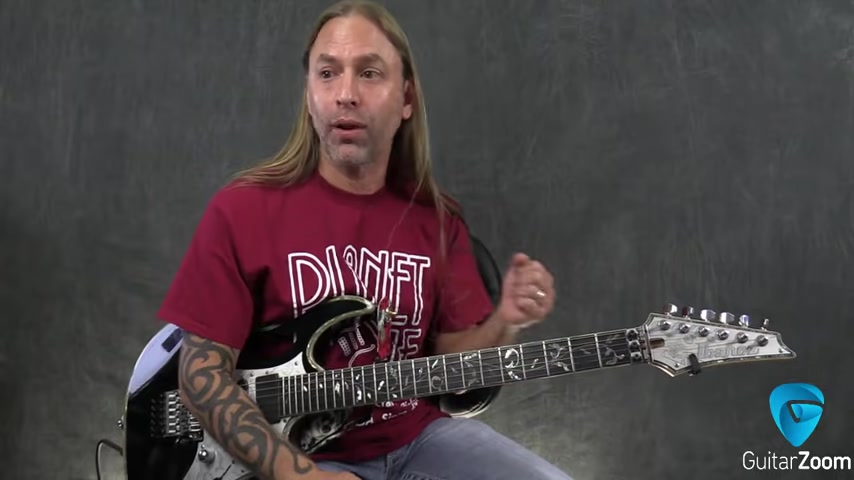
So hammer ons pull offs and then collectively together , we call that a trill .
Ok .
So , uh , strange days asked , um , hey , Bill , strange days asked if , um , hey , everybody , what amp I'm using right now .
All I'm using is a plug in .
I'm using a plug-in called Guitar Rig .
Guitar Rig five is what I'm using right now .
So that's , that's where the tone is coming from .
So let's make an exercise out of this that you can use in your playing .
Ok .
So the first thing we're gonna do is we're just gonna use the typical Pentatonic that I always like to start with to make things nice and easy for everybody .
So , what we're gonna do is we're gonna move toward the floor , but instead of picking each note , what we're gonna do is we're gonna hammer each note as we move .
Ok .
So we're gonna practice hammering as we move towards the floor .
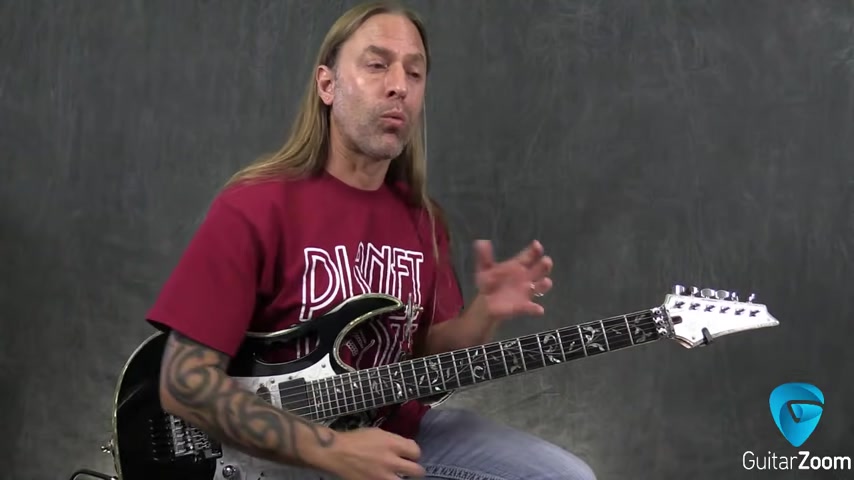
Ok ?
And we're gonna talk about the uses and things like that .
But the first thing is , don't worry about how fast it is in any of the things that you ever want to learn how to do .
Don't worry about how fast you're doing it , worry about how well you're doing it .
And then as you get better at it , you'll get faster at it .
That's just the way things work .
So don't , don't think that your primary directive is speed , your primary directive is execution .
It's how well you're doing it and then the better you do it , of course , the , the faster it's going to get .
So when you're doing things like hammer ons like we're doing right now , always remember that one of the battles that you're going to have um is keeping everything clean , keeping all the other strings deadened while you're executing this particular thing .
So as I play this six string , I am touching all the strings underneath with my first finger to keep them quiet .
I'm not doing this .
Otherwise they start everything else will start vibrating .

So I wanna make sure that I'm deadening those and as I move down this way , OK ?
And all these other strings become exposed , I need to deaden those with this hand .
So I'm not getting noise from those .
So every time I play the key is to make sure everything else is quiet .
So as you're practicing this , keep your temple even .
OK , then we've got pull offs , which we're gonna move towards the ceiling and do that .
So now what we would do is start with eight and five and we'll do a pull off on each side .
Now , when you do pull offs , understand that when you flick whatever finger you're using , if you're using your pinky , for instance , to pull off on the second string , you're gonna wind up probably hitting the first string underneath .
And so the trick is , is always have the string underneath , uh deadened IU again , use my index finger .
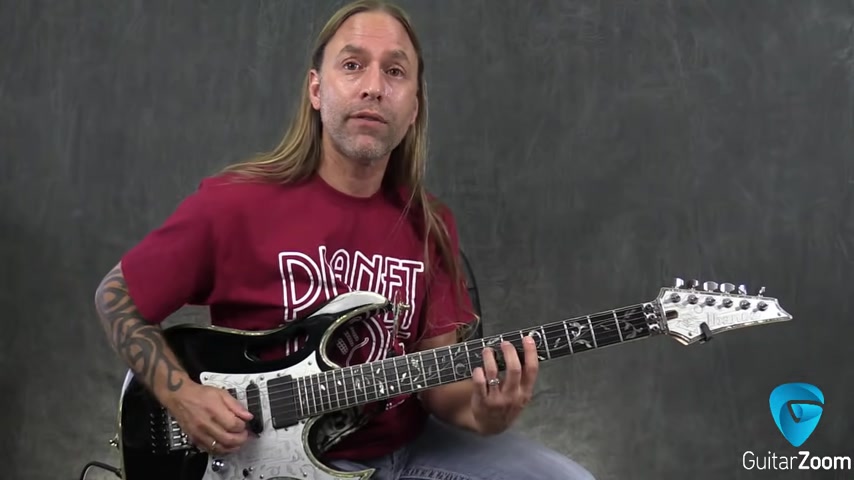
So if I'm on the fourth string for instance , and I do a pull up , I'm kind of running into the third string when I do that pull off , but I'm , I'm deadening that third string with my first finger .
So you're not gonna hear it .
And again , as I move this direction , this hand gets out of the way and this hand starts deadening out all the strings that I again want to keep quiet .
So , hammer ons , OK .
Now , you could do like the uh Iron Maiden thing and practice some trills , right ?
Like uh I think that's in the trooper and you can do them on each string and they don't have to be a certain amount .
It's just learning how to practice doing a hammer on and to pull off .
Ok .
Yeah .
And , uh , Kristen said , uh , Satriani , which we're gonna be talking about in just a second here .
Ok .
Absolutely .
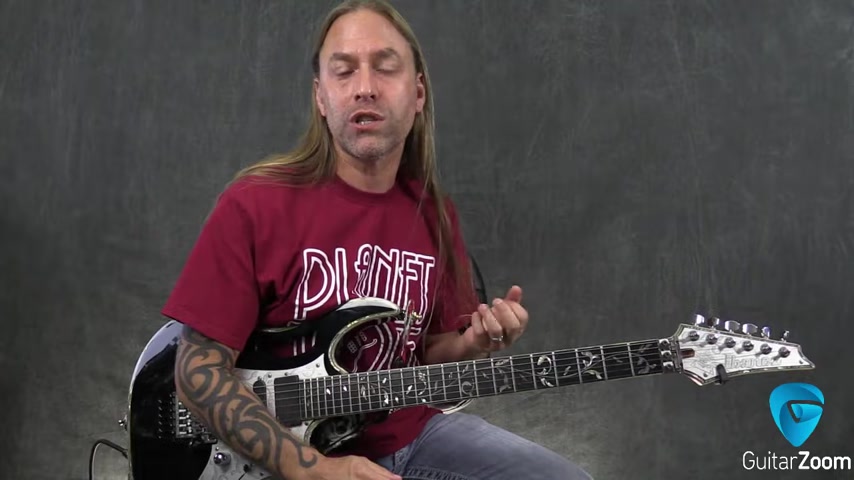
Um , so the cool thing about learning how to do an effective hammer on and pull off and trill , which again , we'll call the Legato family is there's a number of different uses for something like this because people will always say , you know , why , um why play Legato , right ?
Why not just pick everything ?
Well , there's a little bit different thing happening here .
When you pick everything , you get more of AAA and again , this isn't a , a bad term at all .
I , I pick a lot of the stuff that I play on guitar , but everything tends to be more percussive , which is beneficial depending on what we're trying to do .
So , if I play , uh again , I'm looking for that percussive sound in my play .
You see , but sometimes I don't want that .
Sometimes I want things to sound a little more smooth or less percussive and that's where Legato would come in .
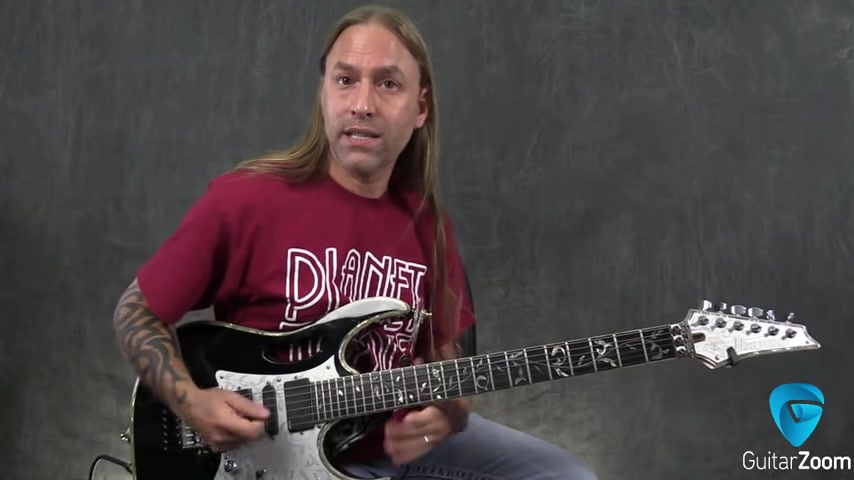
Um So Legato can be used for smoothing things out if you think about it as being less percussive .
Legato can also be used for a different kind of dynamic in your playing .
When you pick things , it sounds like that .
When you play a lot of legato , it sounds a lot different .
There's a different kind of vibe to it .
And , and again , for me growing up listening to the , the players that I did Legato is a very , very important part of , of playing a lot of times as metal players .
If any of you are metal players , we get this thought that everything is supposed to be picked all the time .
And I guarantee you the most amazing metal players still use Legato for different things .
You know , it's not that they can't , you know , we always think it's one or the other .
Like you pick everything or you can't pick everything .
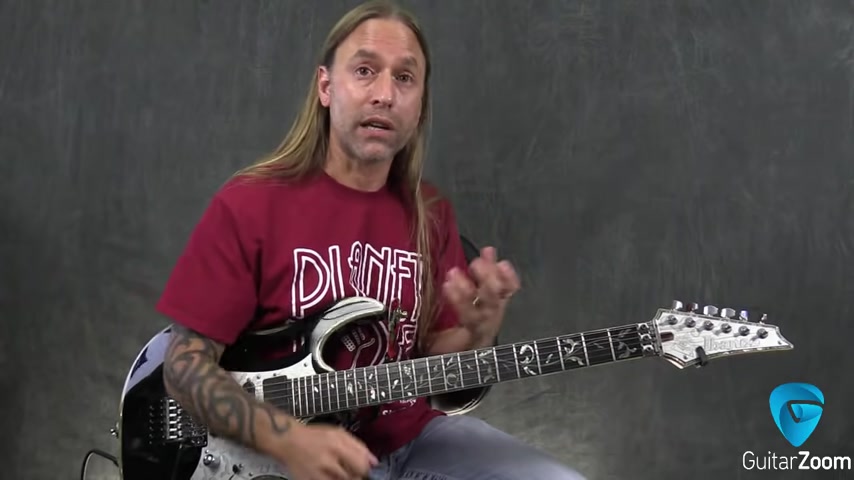
I think there's a nice happy medium in there where you're gonna be using a certain amount of picking and then just a certain amount of natural legato in your playing as well as certain effects like we're talking about now where you really want it to stand out .
So you're using it to , to make things sound nice and smooth or you're making things sound a bit more dynamic .
The other thing that's , that's nice about legato is that you can make things faster if you're not able to do a lot of faster picking .
And again , I'm not saying , don't learn how to pick fast if that's what you're looking for .
But , you know , you can play which I'm gonna show you in just a second , but there's different little passages and patterns that you can learn how to do , utilizing uh legato .
That could be a lot faster than you might be able to do if you were picking it .
And even if you could do it picking again , it has a little bit different sound to it .
OK .
So I'm gonna get to some stuff that I can give you to practice again .
I'm not just gonna talk the whole time .
Um I just wanna make sure I'm not wasting anybody's time here .
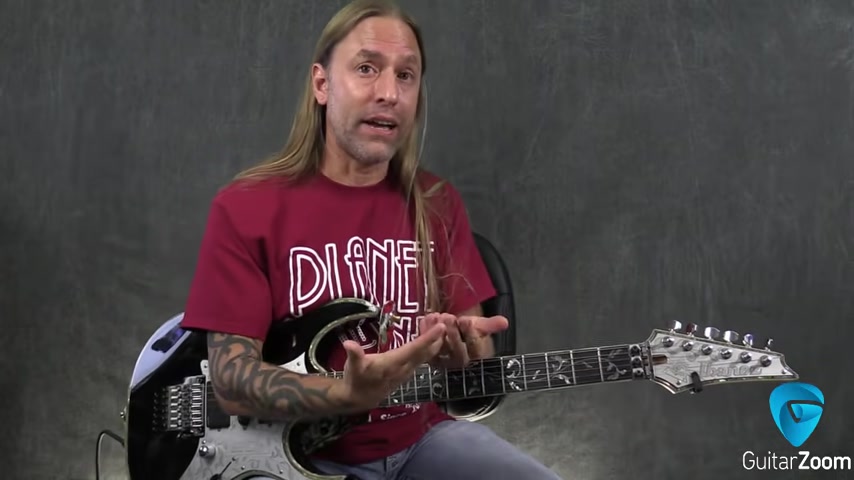
So with Legato , the thing about Legato is you can use it for things that are more subtle .
And if you have your guitar , go ahead and do this with me , let's go up to the ninth fret of the third string .
So we're gonna be in the key of E here and we're going to play that night for you .
OK ?
Now let's play 78 on the second string and then we're gonna go back to the night .
OK .
So that's just a nice little melodic little lick there , right ?
So what we can do is instead of playing it by picking everything we can use a very subtle Legato in there where we're gonna just simply hammer on and maybe we even add in a trill , right ?

So we have , you know , whatever we might want .
So a nice Legato in there in or a trill in replacement of just playing two notes .
Hey , OK .
So just subtle things like that that you can do with a legato .
Now , I'm gonna show you some more obvious things kind of in the style of , uh , you know , Paul Gilbert or , uh , Joe Satriani or something like that that you can use .
That's the next thing .
So that's why you've got your guitar available .
So I just wanna make sure , uh , perfect .
And it looks like I got everybody here .
That's awesome .
Yeah , there's lots of , I can see people are mentioning different places and , and if you're on that chat , please read everybody's chats there because it's absolutely true .
There's lots of different ways that you can play legato .
Now , somebody had mentioned tapping , tapping to me is a different kind of technique .
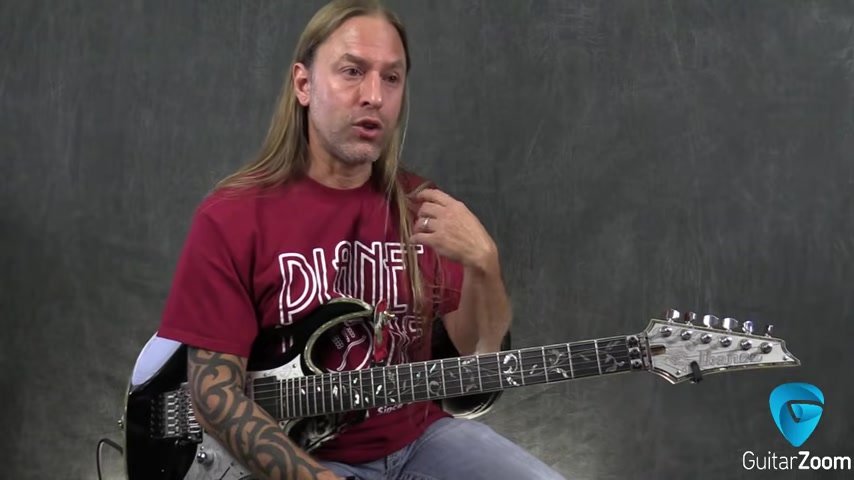
Not that it couldn't be considered legato , but , but today we're not gonna talk about tapping , we definitely will talk about tapping in the near future .
Um But let's stay with hammer on and pull offs uh in trills at this point .
So here's what we're gonna do .
I'm gonna show you three different patterns now that are a bit more obvious in the legato department .
OK ?
And then what you'll have to do is is do your best to write these down , right ?
Or watch this again , if you need to , I'm gonna go through them fairly slow .
But again , I don't want to take an hour of everybody's time here .
So the first one we're gonna do is more of a patterned pentatonic lick and it looks like this one more time .
Ok .
Now , what I'm gonna do is show you the pattern and how you're gonna utilize Ham runs and pull offs and then you can practice this and I've got two other ones , I'm gonna show you too .
So you've got something cool that you can go home and work on again if you're at work or at school or something .
Right .
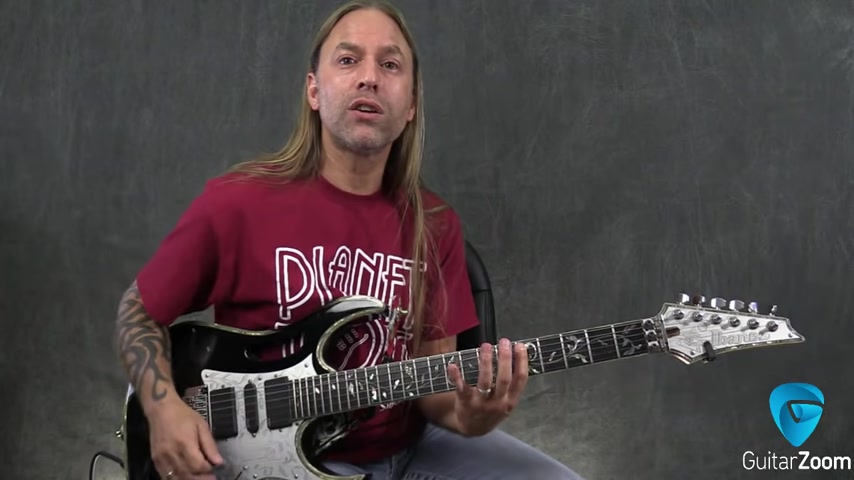
So , here's what we're gonna do .
We're , you're just using Pentatonic here .
Minor Pentatonic , a minor Pentatonic .
I want you to go to the seventh of the fifth string and the fifth fret of the fifth string .
Ok ?
And you're gonna do a pull off just like we did from 7 to 5 .
And then what you're gonna do is you're gonna go to the eighth threat of the sixth track .
Ok ?
So there's your first pull off , then you're gonna go back to the fifth string and do a hammer on from 5 to 7 .
Ok .
Then what we're gonna do is we're going to go to the fifth of the fourth string and then we're just gonna do a pull off from 7 to 5 on the fifth string again and we're done .
So it looks like this .
Ok , so try that a little bit if you've got your guitar handy .
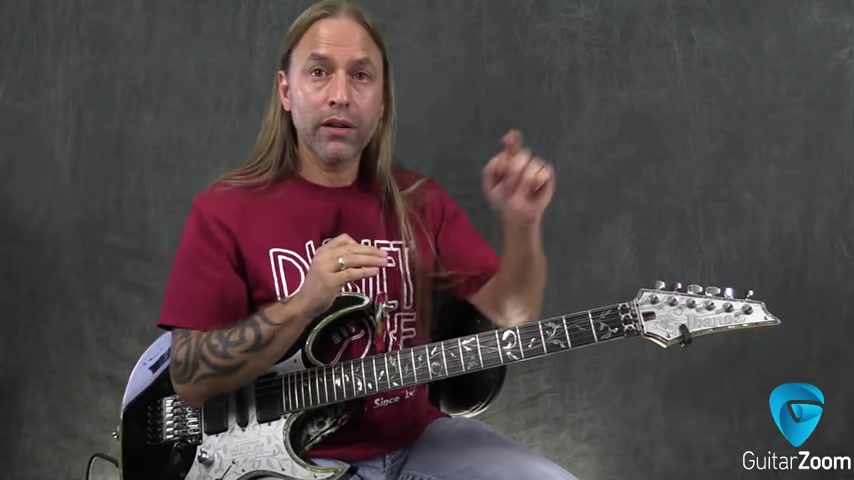
So I'm doing a pull off going to the eighth of the six string , doing a hammer on going to the five of the fourth string and then doing a pull off again , the pull offs and the hammer ons are all occurring on the fifth string .
Ok .
Now , let me do that one pattern over and over and over .
So you can kind of hear how this is gonna sound as I get it going .
You can see how all of a sudden it sounds like there's a lot more going on in there as I speed it up .
Now again , it's gonna take some time , but it sounds like there's a lot more going on than there really is .
I'm just doing this pull off this hammer on and then this pull off and then it just starts all over .
So I'm starting with a pull off and I'm ending with a pull off .

Now , watch this .
If I add just a little bit of palm muting to this , it gives it a bit of that percussive sound like I was picking it .
Watch this .
That's how cool that sounds .
So , instead of just leaving it all open , which is perfectly fine .
If I add a little bit of palm mute , all of a sudden , it begins to give it a bit more of this , this percussive sound , which again , might be kind of fun .
Now , all I did with that is I took that exact same thing and just moved to the fourth string and did and then the third string and then the second string and then I ran out of string .
So I just ended on a bed , I could have done anything at the end , but that's how it went .
So I'm just staying , um , I'm just staying in the Minor Pentatonic .
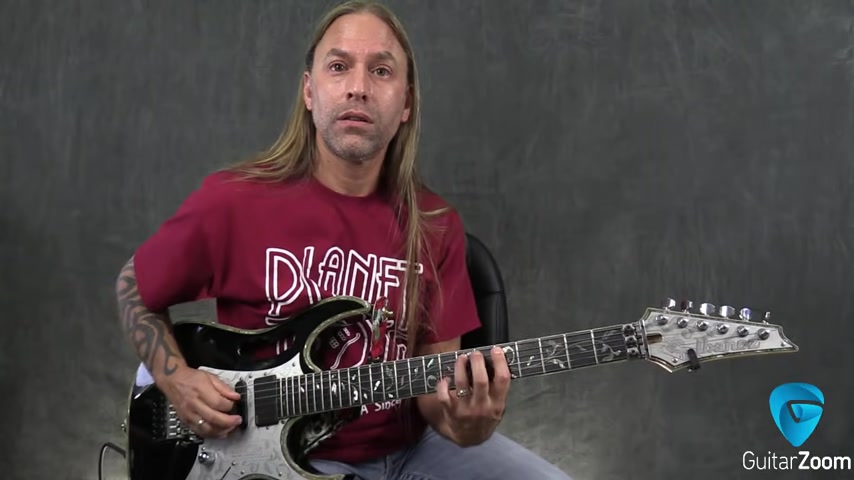
So you just have to remember as you're doing it , all I'm doing is just editing the , the strings or the notes that I'm playing on each string .
So it's just matching the Pentatonic scale as I move and then the eight here because I'm in Pentatonic .
I see .
So I'm just editing it a little bit to make sure it fits in that Pentatonic .
That's the first one that I want you to practice .
OK , cool .
Sounds like everybody kind of got that .
Now guys , again , I see people saying it's too fast .
My point is I want you to hear what it sounds like when you get it fast .
OK ?
I don't want it to be intimidating because the way you feel when you say it's too fast is the way you're gonna make other people feel when you learn how to play it , right .
The goal for you is just to start off learning how to go .
That's it .
That's all you do .
But as , as with any lick or any pattern or anything that you work on with guitar , the goal is to do it to the point .
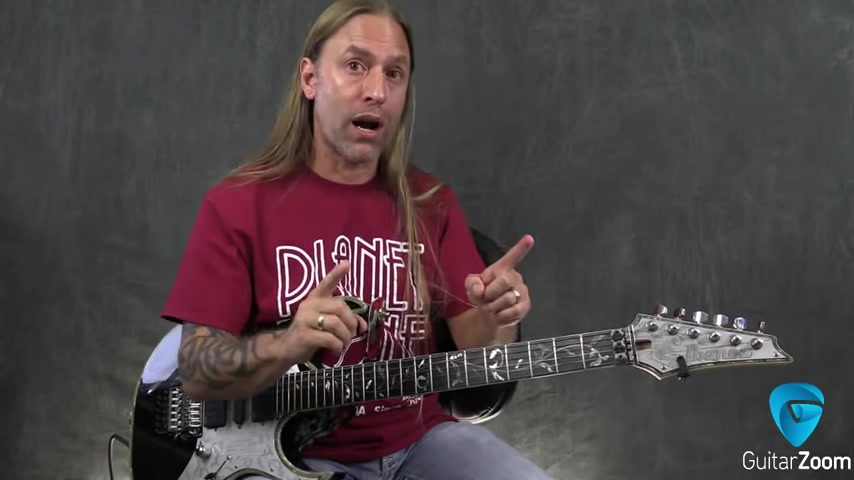
You do it over and over and over to the point where you don't really think about it anymore .
Your fingers , the synchronicity of your hands , every everybody , that whole thing starts taking over .
So it's no more a thought process , right ?
That's the goal with a lot of guitar playing is to move it from the practice realm to the creative realm .
So when you're practicing , you're thinking about it , you're concentrating on all the elements of it and we all , we all need to do that .
But once you've done it enough , it starts moving over into the creative realm where you're not seeing every little note and every little thing , you're seeing it more as this one larger piece .
So you're gonna start off by just learning how to do ham or pull offs and hammer ons here just that .
And it doesn't matter how slow it is .
Don't convince yourself that you , you suck at this because you can't do it .
You gotta do this as slow as you need to just practicing .
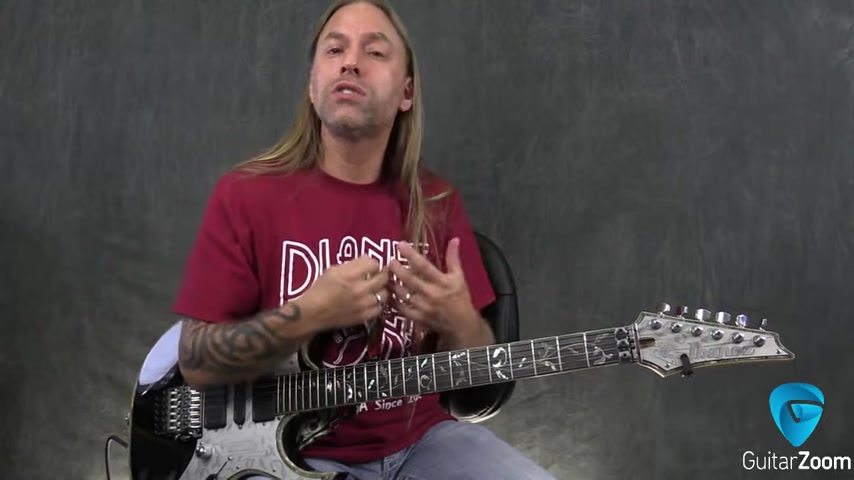
And once you start developing both the technique of doing the hammer ons and pull offs and the visualization of , of that pattern learning to visualize that pattern .
That's when things will start moving a little bit forward , right ?
But there's no time limit here .
You just do it until you start developing it .
So you just do the one spot .
Don't ever worry about moving across the fret board until you've developed the first part .
I just like to show that because there's other people that maybe are further along in their journey and they're wondering how that might work .
So just take your time .
That's the big thing is , is don't be in a hurry .
Ok .
The , the next thing I'm gonna show you is using the G major or ionian or diatonic scale .
OK ?
But in a very unique way using hamer ons .
Ok .
So here's what we're gonna do .
And again , if you've never played those skis before , don't feel threatened by that .
I'm gonna show you what I'm doing here .
I'm gonna play 357 on the six string .
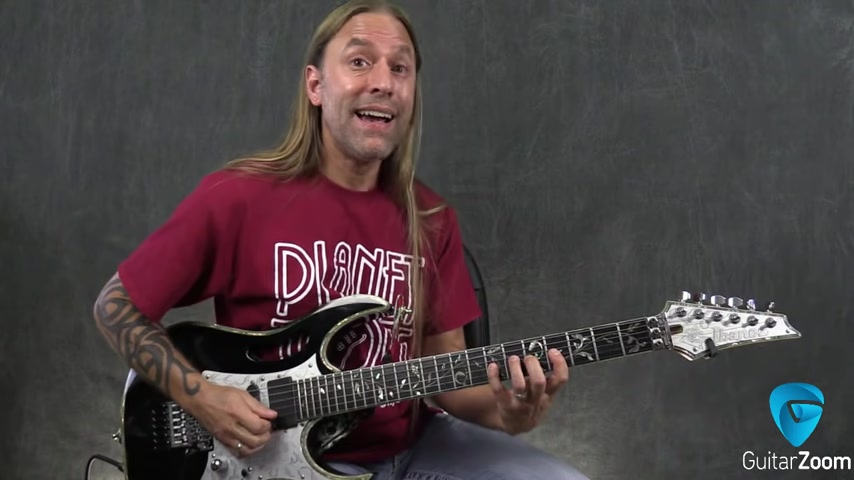
I'm just gonna show you the , the pattern first , then 357 on the fifth string , then 457 on the fourth string , 457 on the third string .
So it's two symmetrical shapes there .
And OK , and then we're actually going to end with 357 on the second string and 357 on the first string .
So we're going back to the same shape that we started with .
So I'm playing 357 twice , 457 twice , then 357 twice again .
So that's the shape , that's the scenario that we're gonna use .
OK , perfect .
Now , as I'm playing 357 , you'll notice I'm using my first finger , my middle finger and my pinky .
If you , if you use something else , that's perfectly fine .
But that's what I'm using for my 357 .
My , what we call a spread fingering .
OK .

Then when I go to 457 , I'm using my , the same fingers .
I'm just moving that first finger to the fourth threat instead .
So I'm playing 457 .
Ok .
Now here's the legato and the patternized aspect of it .
So you gotta watch carefully .
What I'm gonna do is play the sixth string and then I'm gonna go to the fourth string .
So I'm gonna skip the fifth string , which is what we call string skipping .
So I'm gonna play 357 and I'm hammering these , I'm legato playing on a plane .
So I'm hammering 35 and seven .
Then I'm gonna go to the fourth string and play 457 .
So I had OK , then I'm gonna move back to the fifth string and I'm going to play from fifth string to third string .
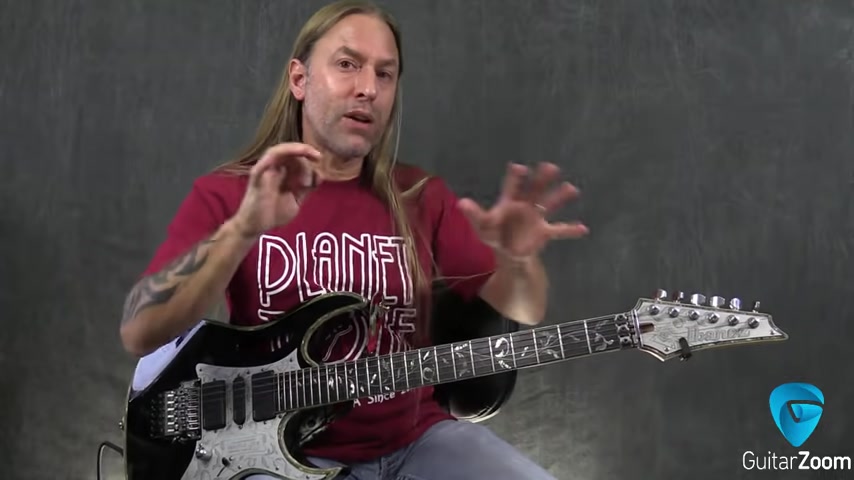
So if I put them together again , it sounds like this and you can see how , because I'm jumping over strings , it sounds kind of funky .
Now again , as I get it a little faster , your brain's gonna go , wow , that sounds kind of crazy .
Or it sounds too fast and it really isn't , it's just a pattern that needs development .
So I'm going , I gotta be able to visualize that pattern though , right ?
And then , then I'm gonna go to the fourth string to the second string again , string , skipping , skipping over one string , then the third string to the first string .
OK .
Movable G major scale .
Yep .
OK .
Now , watch this .
Now I'm gonna put it together and I'm gonna play it faster .
So you can hear the end result .
Ok .
So , here we go .
Sorry .
Yeah .
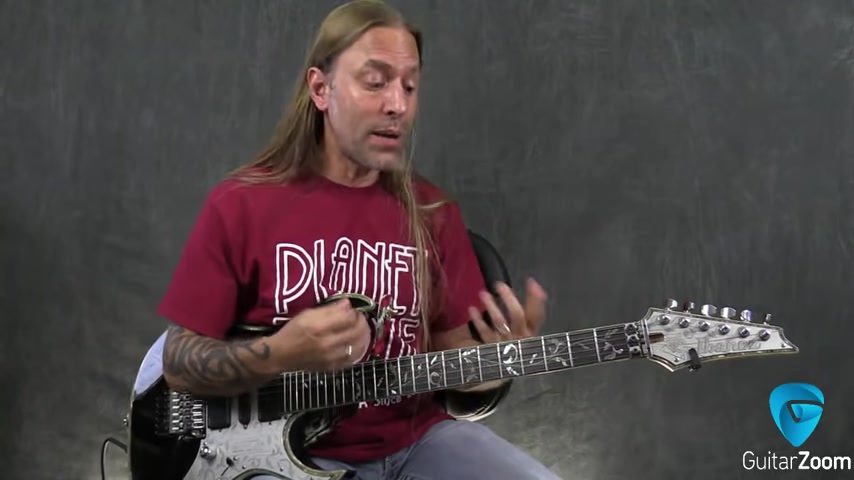
Now you wouldn't have to use the whole thing , right .
But it might be something kind of neat to shake up what you normally do .
Now , let me slow it down so you can see this .
You see ?
Ok .
So that's the second one .
Now , there are all kinds of different patterns and ideas that I use on the guitar when I'm playing and I'm just showing you a couple of different things .
So please understand if you watch one of these and go , I don't really get that or I don't really care for that one .
That's OK .
There's a million different things that you can do .
I'm just showing you some obvious elements of using legato playing versus the more subtle elements within , you know , when I'm playing my normal stuff and I'm picking some and I'm doing a little legato and I'm mixing and matching these .
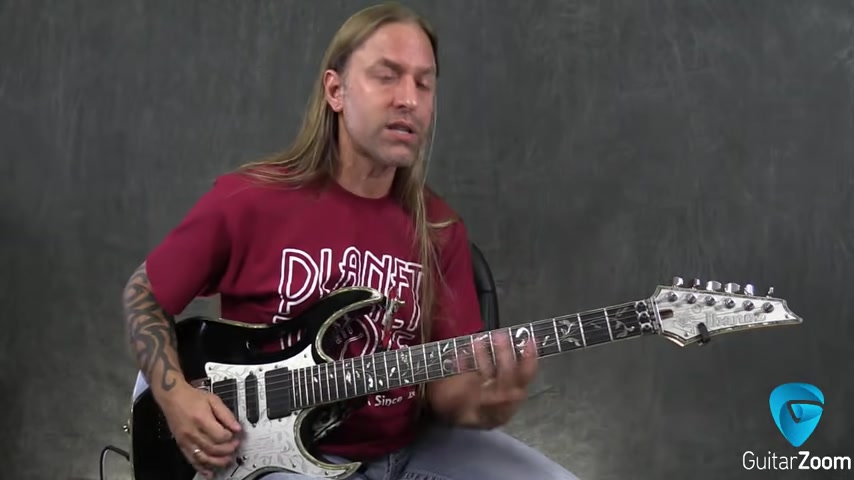
Um , what I'm showing you right now is , is larger patterns of using a lot of legato .
OK .
So here it is , again , one more time faster so you can hear it .
OK ?
And I might do something like that and then move into the , the , the fifth position or the fifth , the minor pentatonic that you're thinking of .
And that brings us to the next thing which is this Satriani kind of thing .
Now , I , again , I don't wanna confuse you with this , but I want you to watch this and hear how , how cool this sounds .
What I'm gonna be using right now is that I'm gonna use 578 on the 2nd and 1st strings and then I'm gonna use 78 , 10 on the first two strings .
You can see how they're connecting with the seven and the eight in the center .
Now , let's say I started up on the 10th fret there and I'm gonna use and I'm gonna do two pull offs this time .
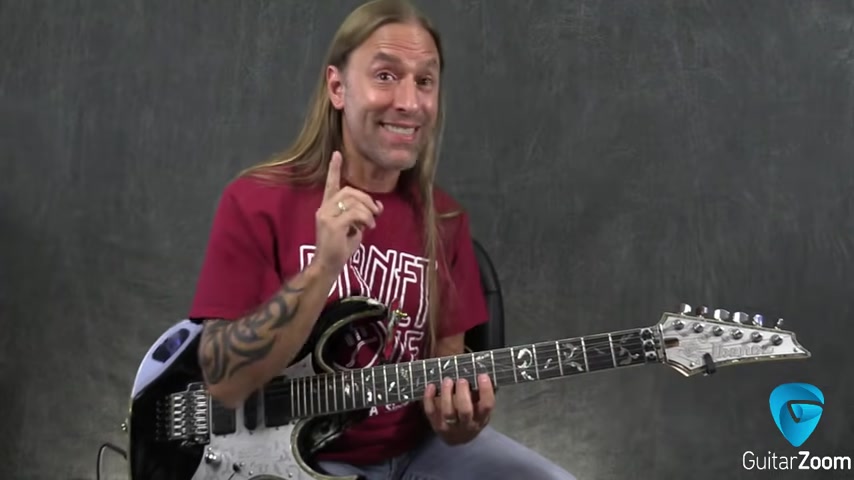
I'm pulling off to the eight and I'm pulling off to the seventh .
So if you've got your guitar handy , do that for me , do this .
Ok .
And then do the same thing on the second string .
10 , 87 .
But don't pick the 10 on the second string go like this hammer that 10 .
It kind of feels like , you know , it , it's , it's slow and then all of a sudden it speeds up .
I always think of that as like , you know , you're , you're coming over the top of a hill and all of a sudden you start going fast on the way down .
That's kind of the Satriani thing starting off .
Now again , I'm just picking the first note and the rest of it is all pull ups to .
Ok .

Now , what I want you to do is after you've done those two and again , it's gonna take time .
So it's just , I don't have a lot of time because I want you all to get back to your life .
So I'm trying to make this a little quicker .
So I'm gonna do a hammer on from that seven , back to eight and back to 10 on the second string .
Watch this .
You see how that's very sat on as that's the word Satriani esque .
Ok .
And then what he'll do is he'll move down into this position , which was the 578 I was just talking about and right there , what I'm doing is I'm coming off this , I'm gonna do pull ups sliding on the phone and then going to the 78 and none of that was picked except for the first one .
Then we do it again , really slow and you can watch this as many times as you need to on the replay .
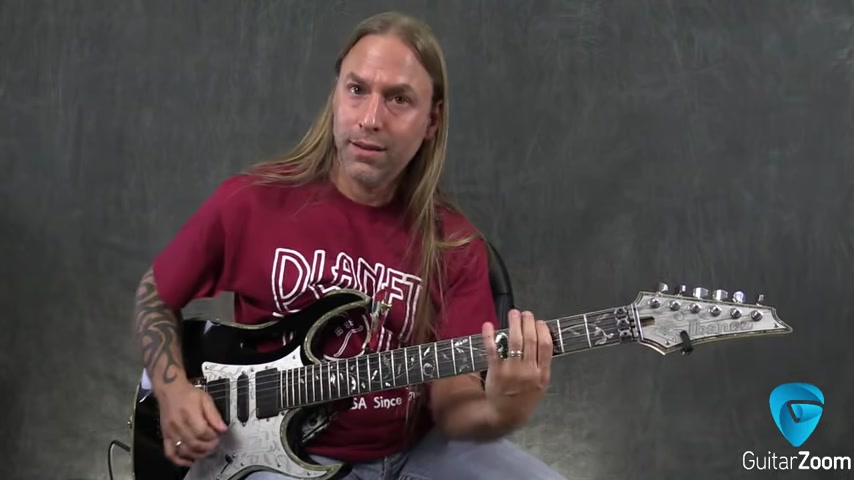
Ok ?
And it's not like 1/16 note pattern or something like that .
It's more just this organic , speeding up and slowing down things .
Yeah , what you hear like and always with me , always with you , that sort of thing you see .
So there's a lot of things going on here .
The , the one thing I want you to walk away with is understanding what legato is and how to do it and then applying it to things in the real world is gonna take some time depending on if you just play Pentatonic at this point or , you know , you do have some diatonic things that you're studying or you just wanna practice like , like speed racer .
I always call it , which is the 78 10 on the first string where I'm just going .
That sounds like speed racer to me , which probably gives you an idea of my age anyway .
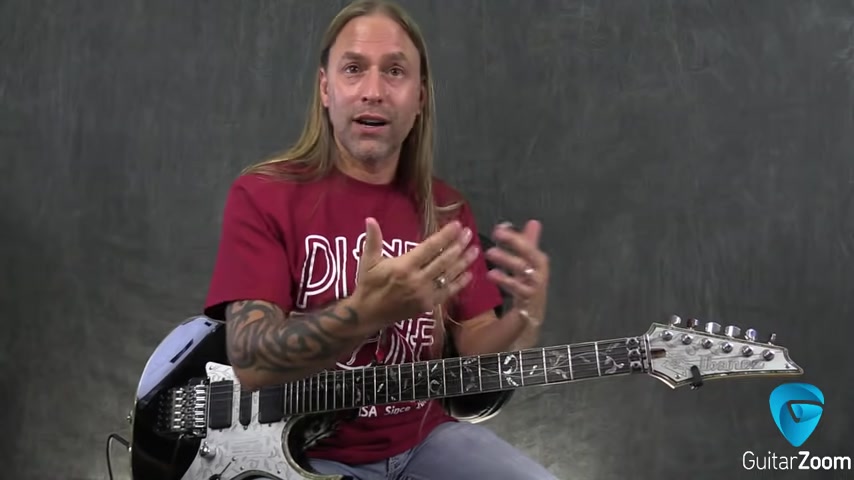
But , uh hopefully that helps you a little bit in understanding how you could apply some of these legato things to your playing and don't get frustrated about speed .
You know , I , I saw somebody here that said , uh let's see here .
Where was it here ?
I don't remember what it was , but somebody was talking negative about themselves .
Stop doing that .
OK ?
You are not at beginner level , you are not at suck level .
It's nothing like that .
It just takes time .
Ok ?
The only reason I'm , I , I can do some of these things maybe better than you can is because I've been doing it longer , right ?
That's the only reason .
So the goal is , is now , is your opportunity to start trying to put some of these things together .
Don't compare yourself to other , other people and , and don't worry about if it takes some time .
That practice is what this is all about .
So it's not whether or not you can do it wonderful by tomorrow .
It's that if you can learn to do it in X amount of weeks or X amount of months , it changes your life for the rest of your life .
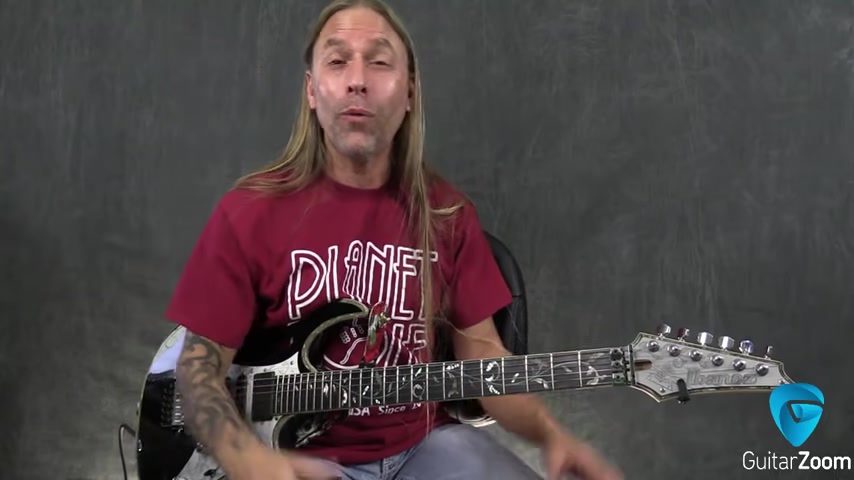
Once you can do it , you own it and you can do whatever you want with it from there .
So everybody I'm gonna let you get back to your lives and do what you do .
And so , so , um , hopefully that helps you .
I'll be around for a couple of minutes afterward to chat a little bit .
Um , but again , stay positive , keep practicing and keep looking for some new things and , and always remember small steps , right .
Go from where you are right now to one little step forward and make that make sense to you .
So don't , don't get , you know , overwhelmed and , and all that sort of thing with information , just find something that works for you and make that , make that happen .
So take care everybody and I will talk to you soon , ok ?
Are you looking for a way to reach a wider audience and get more views on your videos?
Our innovative video to text transcribing service can help you do just that.
We provide accurate transcriptions of your videos along with visual content that will help you attract new viewers and keep them engaged. Plus, our data analytics and ad campaign tools can help you monetize your content and maximize your revenue.
Let's partner up and take your video content to the next level!
Contact us today to learn more.